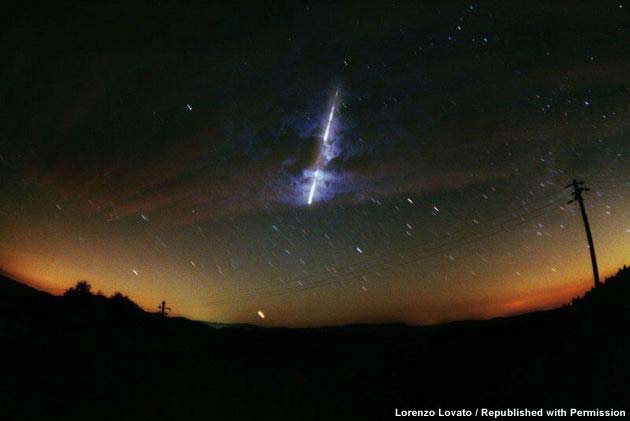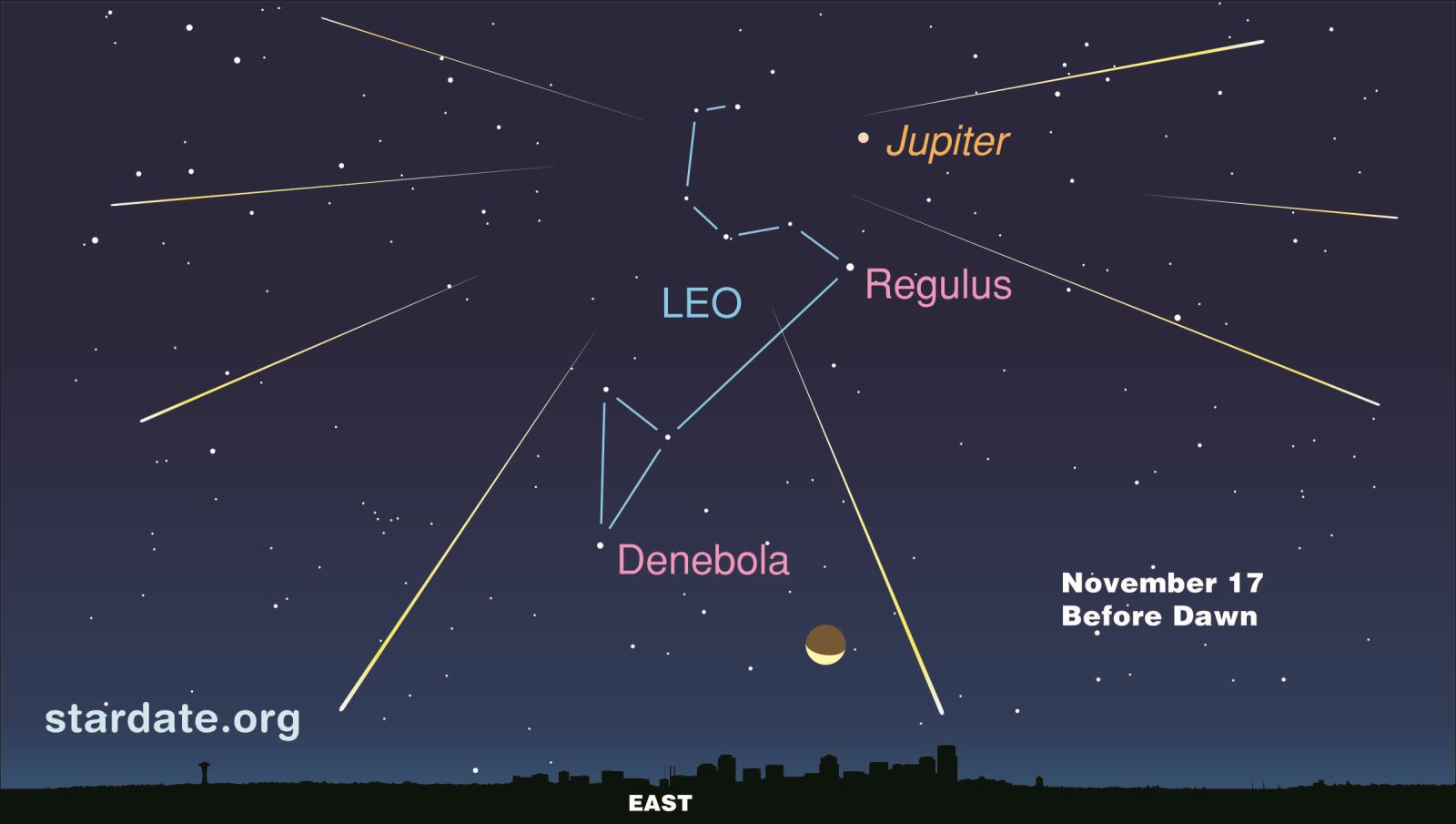Leonid Meteor Shower 2016
(VNF) - In mid-November, spectacular "shooting stars" will streak through the night sky as the Leonid meteor shower hits Earth once again. This annual meteor shower is responsible for some of the most intense meteor storms in history, with meteors falling at rates as high as 50,000 per hour.
This year's Leonid meteor shower won't be quite as impressive, though, said NASA meteor expert Bill Cooke. "This year, the Leonids are not in outburst, so the rates are going to be about 10 to 15 per hour," he said. Outbursts occur when the Earth passes through a particularly dense patch of meteors.
"The Leonids are a very minor meteor shower until they outburst, or storm," Cooke said, "and that's not projected to happen again until 2033."
 |
Italian astrophotographer Lorenzo Lovato photographed this spectacular fireball from the 1998 Leonid meteor shower on Nov. 17th, 1998. (Credit: Lorenzo Lovato)
Visibility will also be poor this year, because bright light from a waning gibbous moon will likely outshine some of the meteors, Cooke said. Despite the small number of meteors per hour and the moon's interference, however, it is still possible to see the meteor shower.
The Leonid meteor shower peaks on the night of Thursday, Nov. 17th, and early the following morning. Skywatchers might be able to see some meteors as early as Sunday, Nov. 13th. However, with a full supermoon slated to rise Monday, Nov. 14th, moonlight will likely outshine most meteors, rendering them difficult to see.
The Leonids will continue to graze the night sky until Nov. 21st. At this point, the waning moon will be at its third quarter, meaning only half of the moon's face will illuminate the sky. With less of the moon's natural light obstructing the view, skywatchers who were unable to see the meteor shower at first will still have a chance to catch the last Leonid meteors.
The Leonid meteor shower gets its name from the constellation Leo, where its meteors appear to originate. But it isn't necessary to look in any particular direction to enjoy the meteor shower, Cooke said.
 |
Meteors appear to come out of the constellation Leo during the Leonid meteor shower, which is expected to peak on November 14th. (Credit: StarDate Magazine)
The Leonid meteor shower happens every year in November, when Earth's orbit crosses the orbit of Comet Tempel-Tuttle. The comet makes its way around the sun every 33.3 years, leaving a trail of dust rubble in its wake.
When Earth's orbit crosses this trail of debris, pieces of the comet fall toward the planet's surface. Drag, or air resistance, in Earth's atmosphere cause the comet's crumbs to heat up and ignite into burning balls of fire called meteors.
These comet crumbs are usually the size of a grain of sand or a pea, so they tend to burn up entirely before striking Earth's surface. Meteors that survive the whole journey to the ground are called meteorites. But the Leonid meteor shower likely won't deliver any meteorites.
Meteors will be visible to the naked eye, so you won't need any special equipment to see them. This year, the only thing you might need is patience, Cooke said, because the meteors won't be very frequent./.
( Compiled by VNF )
Recommended
 Handbook
Handbook
Vietnam Moves Up 8 Places In World Happiness Index
 Handbook
Handbook
Travelling Vietnam Through French Artist's Children Book
 Multimedia
Multimedia
Vietnamese Turmeric Fish among Best Asian Dishes: TasteAtlas
 Handbook
Handbook
From Lost to Found: German Tourist Thanks Vietnamese Police for Returning His Bag
 Handbook
Handbook
Prediction and Resolution for the Disasters of Humanity
 Handbook
Handbook
16 French Films To Be Shown For Free During Tet Holiday In Vietnam
 Handbook
Handbook
Unique Cultural and Religious Activities to Welcome Year of the Snake
 Handbook
Handbook
